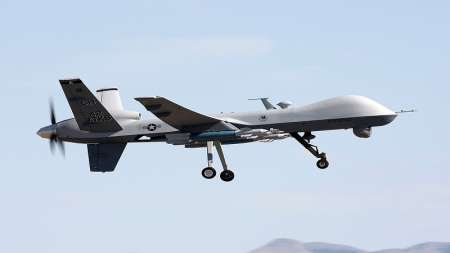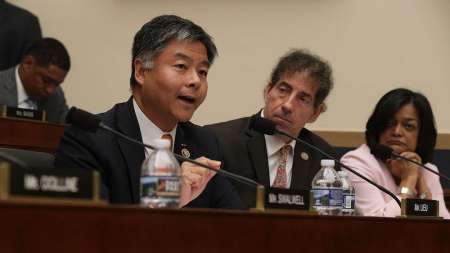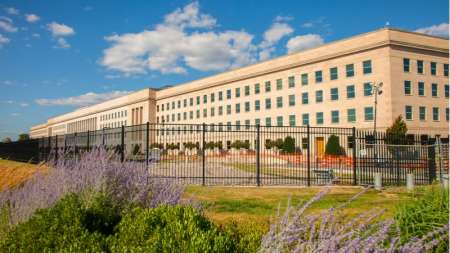The Defense Information Systems Agency (DISA) is considering limiting the network damage that can result from Web browsing by having employees take it outside. […]
The possibilities of quantum computing have been floating on the horizon for a while now, at least since renowned physicist Richard Feynman dreamed up the idea in 1982. But like the horizon itself (at least in a world that isn’t flat), it always seems to recede despite all efforts to close in on it. Until now. […]
Welcome to MeriTalk News Briefs, where we bring you all the day’s action that didn’t quite make the headlines. No need to shout about ‘em, but we do feel that they merit talk. […]
Remotely operating an unmanned vehicle (UxV) has often been compared to playing a video game. But while there is a lot more to it than that, the military has found that games do have value in helping them identify potential recruits who have the abilities needed for drone piloting. New programs by the Navy and Air Force are reinforcing the idea that specifically tailored gaming systems can reveal the cognitive skills and personality traits necessary to operate their growing ranks of UxVs. […]
House members on Thursday reintroduced a bipartisan bill that would prevent states from requiring technology companies to include encryption “backdoors” in their products that would allow governments to access data stored on those products. […]
Tony Scott was the Federal government’s third chief information officer, serving the nation in that role from 2015 through early 2017. During his time at the helm of government-wide IT, Scott led the development of 2016’s State of Federal IT Report, which left a lasting roadmap for modernization progress in the Federal government. […]
Welcome to MeriTalk News Briefs, where we bring you all the day’s action that didn’t quite make the headlines. No need to shout about ‘em, but we do feel that they merit talk. […]
With the Department of Veterans Affairs (VA) formally signing on last month to adopt the same electronic health records system as the Department of Defense (DoD), the two agencies are putting a lot of chips on a solution to a problem that history suggests is pretty risky. […]
Agencies need to leverage digital recruiting initiatives and enhanced data techniques to better attract talented and diverse personnel, according to human relations professionals at several Federal agencies speaking at a FedInsider webinar held May 31. […]
Military users will soon see a tenfold boost in the Department of Defense’s telecommunications network, in a move that will support the service’s combatant commands, the Joint Information Environment (JIE), and in the process, DoD’s push toward commercial cloud services. […]
A new report from the Departments of Commerce (DoC) and Homeland Security (DHS) suggests that the proliferation of botnets and the automated, distributed cyber attacks they generate will cause greater problems for Federal agencies absent a robust government response to the problem that includes a proper mix of funding, policies, and public-private collaboration. […]
The U.S. Cyber Command is ready for its close-up. The command announced May 17 that all 133 of its Cyber Mission Teams are fully operational, capping a roughly one-month stretch that saw the arrival of a new commander, the opening of a new operations center, and the official designation of Cybercom as a full unified combatant command. […]
Today the Department of Homeland Security (DHS) and the Federal Bureau of Investigation (FBI) released a joint Technical Alert (TA) identifying two families of malware–dubbed Joanap and Brambul–used by the North Korean government. […]
The Pentagon wants more hackers to take aim at its systems, launching another program that invites crowdsourced attacks from outside the Department of Defense (DoD) to help it identify and mitigate vulnerabilities in its networks and information systems. […]
The chairman of the House Armed Services Committee raised a few eyebrows recently when he put forth draft legislation dated April 16 and aimed at cutting defense spending by eliminating seven Department of Defense (DoD) agencies, including the Defense Information Systems Agency (DISA). […]
Because spending plans make for informative policy documents, an April markup of the 2019 National Defense Authorization Act (NDAA) offers an outline of the Department of Defense’s plans for its cyber operations and the development of new technologies. […]
As part of its accelerated push toward commercial cloud services, the Defense Department has ordered more than 100 data centers in what DoD calls its “Fourth Estate” agencies to migrate their applications to milCloud 2.0, a commercially run cloud hosted by the Defense Information Systems Agency (DISA). […]
Artificial Intelligence systems are known for getting results with compute-intensive analytics involving huge data sets and a lot of processing power. But it turns out they also can help users do more with less. […]
In a previously announced move, the Pentagon elevated the U.S. Cyber Command to a full unified command. This reflects the universal role cyber operations–and potential cyber threats–have come to play across the range of military activities, and how relatively quickly virtual technologies have changed the game. […]
As debate swirls around the Department of Defense’s (DoD) multibillion dollar Joint Enterprise Defense Infrastructure (JEDI) cloud acquisition, the department’s push toward commercial cloud services is continuing on other fronts. […]
John Bolton, President Trump’s national security adviser, may not be hunting for a replacement for Rob Joyce, the current White House cybersecurity coordinator, who previously announced he would leave his post and return to the National Security Agency later this month. […]
For the first time in more than eight years, the House Appropriations committee shuttered its doors when it discussed budget issues with top Pentagon brass late last month. […]
Army Lieutenant General Paul Nakasone is taking over this afternoon as chief of U.S. Cyber Command and director of the National Security Agency. At the same time, U.S. Cyber Command is being elevated to the level of a full unified military command, the Defense Department said today. […]
You can hear the clatter from the White House as it hammers out the details of a long-awaited national cyber security strategy. But, the Department of Defense (DoD) cyber policy strategists are writing out advice to keep Federal agencies safe from hackers’ webs today. […]
Users have the reputation of being the weakest link in cybersecurity, because of their potential to undo the most fortified cyber setup with an exposed password or absent-minded click in a phishing email. They’re the guy who forgets to lock one door in an otherwise secure building, or the kid who unwittingly reveals where the family keeps an emergency house key. […]
The Air Force has awarded five small businesses contracts that could top out at $950 million for the rapid development of new cyber capabilities. This contract continues an effort by the service, and the Department of Defense overall, to keep up with potential adversaries in the fast-changing cyber domain. […]
The Pentagon’s vision of future warfare involves teams of small autonomous and semi-autonomous unmanned vehicles–in the air, on the ground, and in the water–operating in coordinated swarms to support troops on the battlefield. […]
The Pentagon has a lot of dogs in the artificial intelligence fight. Now it seems to be setting up shop to get those puppies groomed and ready for the big show. […]
In another example of how far the cyber domain is pervading every aspect of warfare, military units are beginning to add cyber protection testing to vehicles before they hit the road. […]
Bot-driven cyberattacks and other fast-spreading malware have been making some pretty big waves of late. The Mirai botnet, for example, launched several record-setting Distributed Denial-of-Service–DDoS–attacks starting in September 2016. […]



















